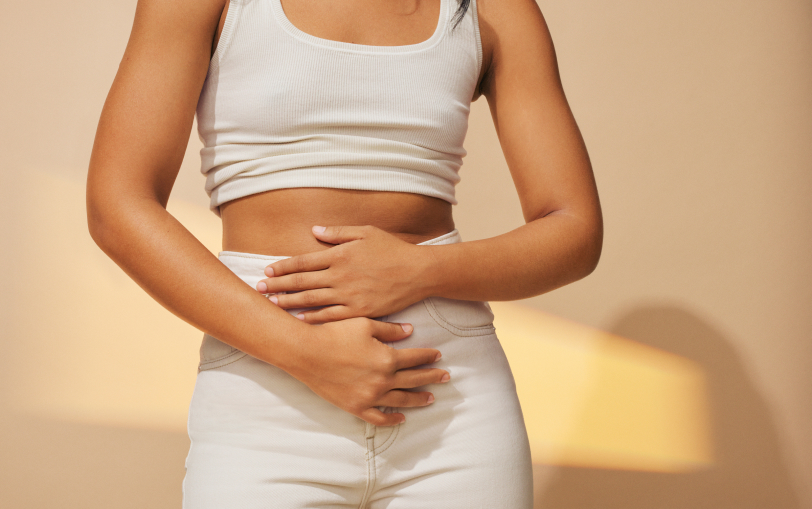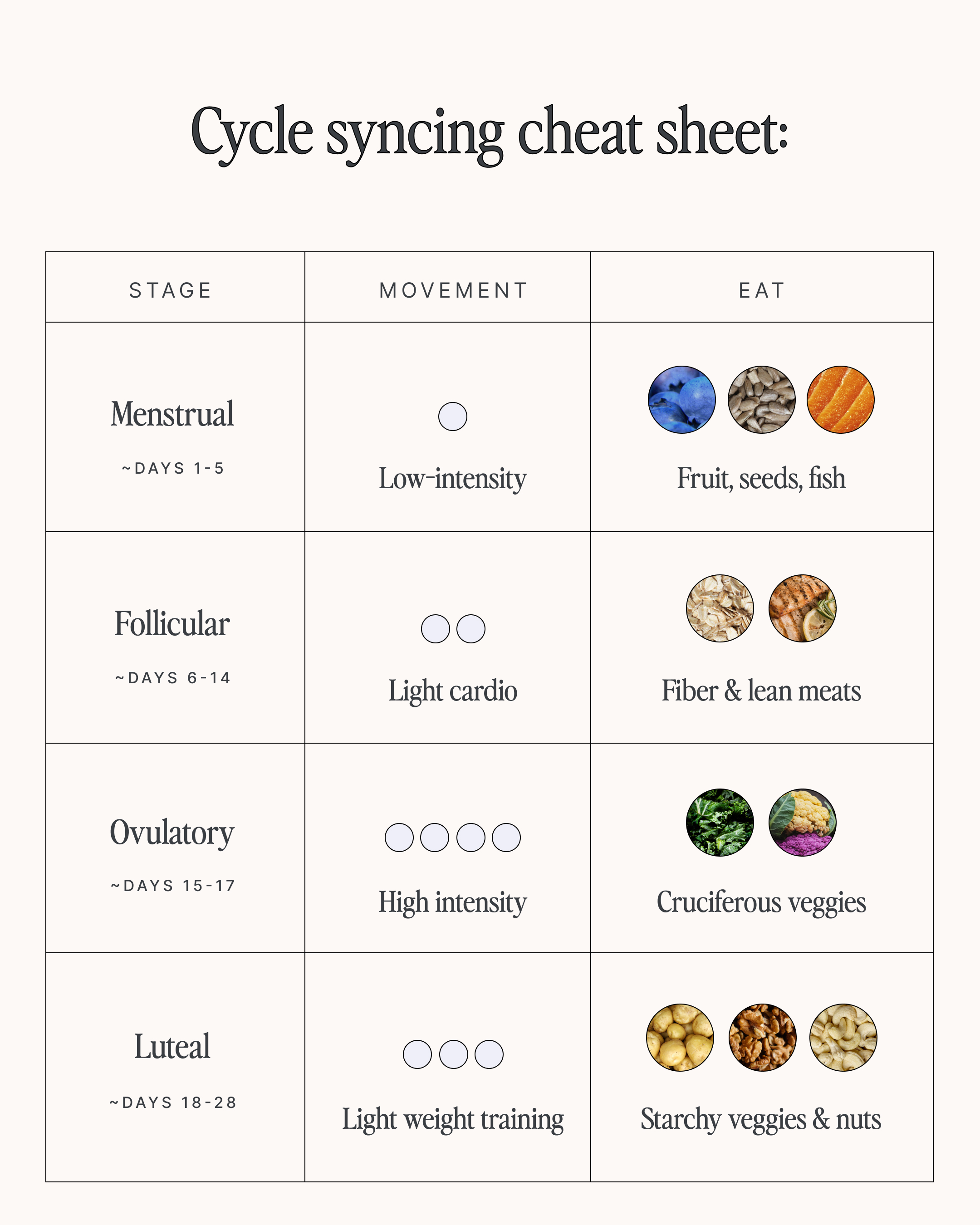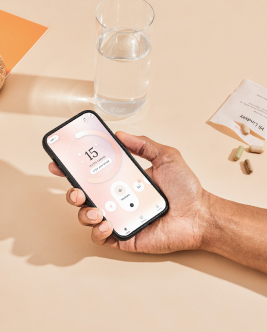lifestyle
Cycle Syncing Workouts: A Complete Guide
On This Page

Cycle syncing is the practice of aligning your workouts with your menstrual cycle. It can help greatly enhance your exercise performance.
For those who experience a regular period, there is no doubt that at certain times of the month, it may feel like it’s impossible to get a workout in. The hormonal shifts during your cycle can cause energy levels to be completely out of whack. And, let’s face it – the last thing you feel like doing when you’re exhausted is running to the gym. However, there is a new phenomenon that is providing a much-needed loophole for dealing with hormonal fluctuations, and it is taking social media by storm. This is known as “cycle syncing,” and we’re going to share all the juicy details behind this fad and how it can benefit you and your workout routine. So, if you’re ready, let’s dive in.
What is Cycle Syncing?
Cycle syncing is a practice that involves adjusting your diet, exercise, and self-care routine to align with the different phases of your menstrual cycle. During each phase of the menstrual cycle, hormones fluctuate in various ways, resulting in a range of both physical and mental symptoms. Cycle syncing allows you to work with your body’s natural rhythms throughout these fluctuations, rather than against them.
Cycle syncing can involve anything from adjusting your diet to incorporating specific exercises into your fitness routine, all with the goal of supporting your body's needs at different times throughout your cycle. However, in this article, we are specifically going to discuss cycle syncing in terms of exercise.
Menstrual Cycle Phases
To better understand how hormones fluctuate throughout the cycle, we are going to explain the four phases of the menstrual cycle and what exactly goes on in each one. The four phases of the menstrual cycle include: follicular phase, ovulatory phase, luteal phase, and menstrual phase. The length of the menstrual cycle is not an exact science for everyone. While the norm is typically considered to be 28 days, this can vary greatly from person to person.
Follicular Phase
The follicular phase typically makes up the first half of the cycle. Based on a 28-day cycle, the follicular phase would include days 1-14, which technically includes the menses (period). During this phase, estrogen is the predominant hormone, which is mainly responsible for getting the body prepared for ovulation. It continues to increase as we approach ovulation.
Ovulatory Phase
Next up is the ovulatory phase, which will usually occur 14 days before menses (exactly halfway through the cycle). The whole reason for estrogen peaking in the follicular phase is to get the body ready for ovulation. During the ovulatory phase, there is an array of hormonal changes occurring. First, it begins with a surge in both luteinizing hormone (LH) and follicle-stimulating hormone (FSH). LH stimulates the release of the egg, which is what we refer to as ovulation. And, while LH and FSH surge, estrogen begins to decrease, and conversely, progesterone starts increasing. After ovulation is over, LH and FSH rapidly drop and progesterone continues to rise.
Luteal Phase
Now we enter the second half of the cycle, known as the luteal phase. The luteal phase will make up days 15-28 and the predominant hormone here is progesterone. Progesterone is responsible for thickening the line of the uterus to prepare for the implantation of a fertilized egg. Whether or not an egg is fertilized during ovulation will determine what goes on with the hormones during this phase.
If an egg is fertilized, progesterone will continue to rise to support the early stages of pregnancy. But, if the egg is not fertilized, progesterone levels will start to gradually decrease until the end of the luteal phase. This drop in progesterone is what signals to the body that an egg was not fertilized and, instead, that it’s time for menstruation to occur.
Menstrual Phase
The menstrual phase – days 1-5 – is when menses begins and the uterus lining begins to shed. When menses occurs, it signifies the start of a new cycle and it will usually last about 5 days. During this time, generally 30-80 ml of blood is lost.
Now that you have a bit more background on the hormonal changes and the timeline of the menstrual cycle, we can start exploring which exercises are paired best with each phase.

Benefits of Cycle Syncing Workouts
Cycle syncing your workouts involves tailoring your exercise regimen to match different phases of your menstrual cycle. By doing so, you can maximize the benefits of each phase and enhance your fitness performance. It may even help alleviate some of the most dreaded PMS symptoms.
Cycle syncing also allows you to incorporate a variety of exercises during different times, which can help keep your workouts interesting and challenging. This could increase motivation and prevent you from reaching any fitness plateaus. You might even surprise yourself with what you're capable of when you work with your body rather than against it.
Additionally, cycle syncing can allow you to connect with your body on a deeper level, allowing you to develop a better understanding of your natural rhythms and needs.
Exercises for Each Phase
We are going to provide some suggestions about which types of exercise are paired best for each phase of the cycle. However, it is ultimately recommended to listen to your body and how you feel to determine the best exercise regimen to follow.
Follicular phase exercises
During the follicular phase, estrogen is the predominant hormone, and the levels are quite low until ovulation begins to approach. Low estrogen levels can cause feelings of fatigue and lethargy, which can make you feel more tired than usual. Because of these lower energy levels, it is no surprise that this study found that during the early follicular phase, exercise performance might be slightly reduced. On the other hand, another study found that isometric force was higher during the follicular phase, compared to the luteal phase. However, more studies are needed to draw conclusions. Due to the lower estrogen levels and feelings of fatigue that can occur at the beginning of the cycle, light cardio such as jogging, biking, or swimming would be good options.
Ovulatory phase exercises
The rise in LH and FSH that occur here may help boost energy levels and improve endurance, making it a great time to challenge yourself with some more intense workouts. According to research, high-intensity exercise may be a great option during this phase. Some examples of high-intensity workouts include HIIT, circuit training, and higher strength and power training.
However, it's important to be cautious and not overdo it, as excess exercise can actually have a negative impact on your menstrual cycle. So, while it's okay to push yourself during the ovulatory phase, make sure you're still taking rest days and not overexerting yourself.
Luteal phase exercises
The luteal phase makes up a series of hormonal shifts, including the premenstrual stage, which can result in symptoms of PMS. For many, PMS can be a debilitating time with many mood changes and a decrease in energy. Estrogen levels begin to drop and progesterone will reach its peak, eventually beginning to drop by day 21 or 22. The fall of these two hormones can result in mood changes, night sweats, and sometimes headaches.
The best workouts during this time would be light weight training, light resistance training, pilates, or workouts that are beneficial for both body and mind, such as yoga. According to this study, sweating can increase during the luteal phase, which is why incorporating moderate activity is recommended. Overdoing it and elevating your body temperature too high is not the best course of action during this phase.
Menstrual phase exercises
Now, we have finally reached the menstrual phase. During this time, it is not recommended to engage in high-intensity workouts, as energy levels are typically at their lowest and nutrients may be lost from bleeding. The menstrual phase is the best time to incorporate more restorative movement and low-intensity exercise, such as yoga, stretching, or walking. Fascinatingly, this study found that incorporating yin yoga helped relieve symptoms of premenstrual distress, like cramps, aches and pains, and diminished mood.
The Bottom Line
As we all know, our hormones fluctuate throughout our menstrual cycle, which can sometimes make it challenging to maintain a consistent exercise routine. This is how the cycle syncing trend came to be. Cycle syncing allows you to work with your body’s natural rhythms. By doing so, you can boost your fitness performance and take advantage of your energy levels during different times of the month.
For instance, during the follicular phase, when energy levels may be lower, jogging or cycling can provide the perfect light cardio workout. But as estrogen levels increase and ovulation approaches, high-intensity exercises such as HIIT or plyometric exercises can be highly beneficial.
As the luteal phase progresses and progesterone and estrogen levels decline, light to moderate exercise like resistance training or pilates can be ideal. Finally, during the menstrual phase, when symptoms like cramps and bloating can be a challenge, incorporating rest days and gentle exercises such as yoga, stretching, or walking can help you stay active while providing your body with the rest it needs.



